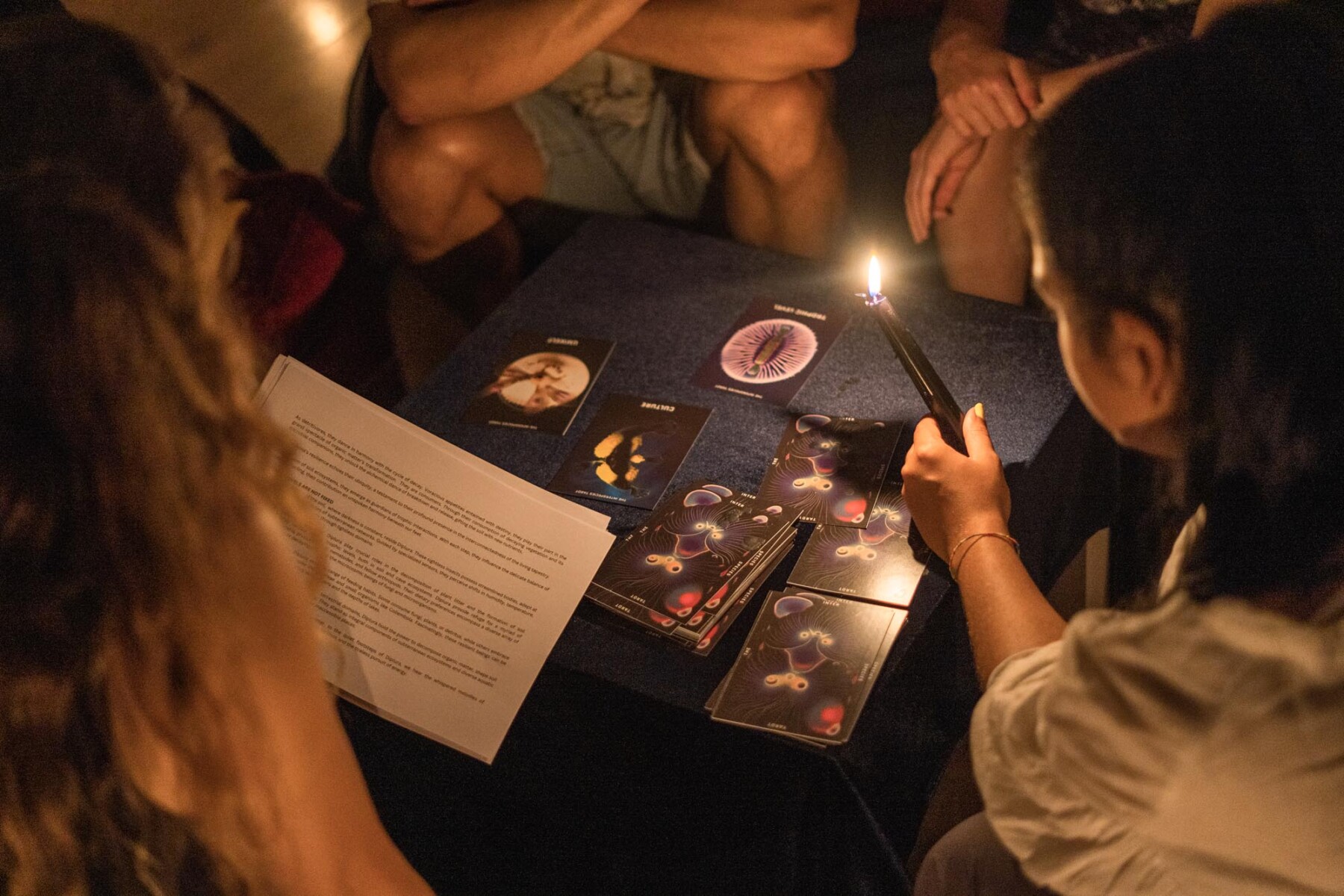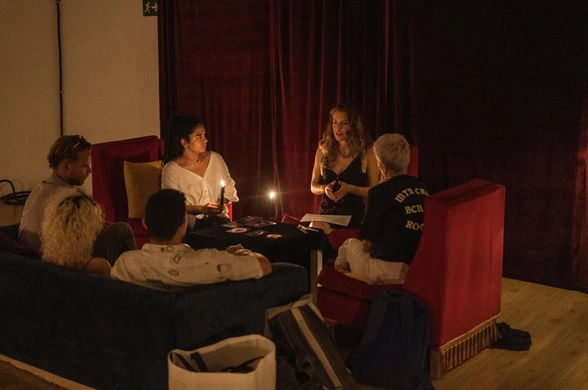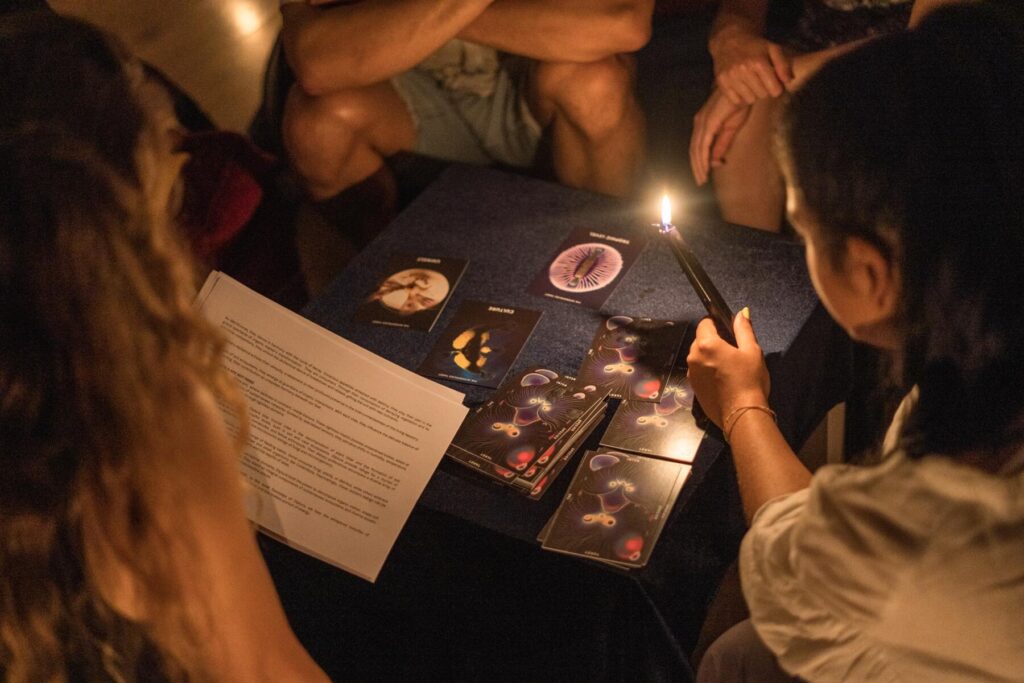
A tarot deck for interspecies design
A playful tool created by Master on Design for Emergent Futures alumni to rethink biodesign ethics and collaboration across species.
Introducing The Interspecies Tarot – a collaborative project created by Carolina Almeida and Paige Perillat-Piratoine alumni of the Master in Design for Emergent Futures (MDEF) that explores the intricate ethics of interspecies work. Each card serves as a transformative tool to navigate the complex relationships between humans and other species, opening pathways to understanding through both existing and newly crafted cards. In this short interview, the alumni walks us through their experience in the MDEF programme, and how a deck of cards became a creative and critical tool for understanding how we relate to the non-human world.
- What is the Interspecies Tarot and how did it come to life?
Interspecies Tarot is a tool for designers, scientists, researchers and biophiles who want to work with non-human species in more thoughtful, ethical ways. It’s a card deck – but it’s also an experience. The idea came during MDEF, through many conversations and provocations around care, ethics and speculative design. I wanted to create something playful yet serious, to help people reflect on how they relate to other species.
- So, why a tarot deck?
At first, I was hesitant. The world doesn’t need another deck of cards. But tarot, with its roots in storytelling and symbolism, offered something more than just information. It became a medium for conversation and reflection. It felt like the right form – magical, tactile, and communal. It invites people to step outside the lab and enter a more open-ended dialogue with life.
“Tarot became a way to tell stories about care, about ethics, about what it means to design with—not just for—other species.”
- Where did you develop the Interspecies Tarot?
The first iterations were prototyped at Fab Lab Barcelona and IAAC. It’s a space where strange ideas are not only welcome but expected. With access to fabrication tools, printers, mentorship, and other MDEF peers working in fields like bioart and synthetic biology, I had the freedom to test and iterate the deck. It also helped that the lab culture encourages inter-disciplinarity—you could be talking about mushroom material in the morning and AI ethics by the afternoon.
- Who are you collaborating with now?
I’ve been working closely with Paig, an artist and designer with a shared interest in bioethics and interspecies communication. Together we developed the visual language and structure of the cards. Beyond that, we’re in touch with people in the DIYbio scene, speculative designers, and educators who want to use the deck in classrooms or labs. The community around this is really diverse—and growing.
- What’s the goal of the project now that you’ve graduated?
We want to turn the tarot into a proper product—a beautiful box set that people can use in their labs or studios. The idea is that someone can open the deck and say, “Today I’m going to start a new experiment or project. Let me begin by drawing a card and reflecting on my responsibilities and relationships to other species involved.” It’s about pausing and asking questions. It’s about care as a design methodology.
“We hope the tarot can become a go-to resource for biodesigners who want to embed ethics and empathy into their processes.”
- Are you planning to take the project further?
Absolutely. We want to travel with it—take it to festivals, bioart residencies, and conferences. There’s already interest from curators and educators. We’re also developing a facilitation guide and a set of prompts that can be used in classrooms or design workshops. Ideally, it becomes a living, evolving thing.
- How did you fund your work after MDEF?
So far it’s been self-initiated, but we’re applying for small design research grants. We’ve also been invited to a few design residencies that support biodesign and art-science projects. Long-term, we’d love to crowdfund or partner with institutions that want to distribute the tarot more widely.
- What would you tell your past self before starting MDEF?
Don’t be afraid to be weird. And don’t be afraid of things that feel too poetic or philosophical. MDEF gave me the confidence to merge critical thinking with making. It’s not just about building things—it’s about building ideas and values into things. That’s what I wish I knew earlier.
- Who should apply to MDEF?
Anyone who feels frustrated by the status quo and wants to prototype new ways of living, making, or knowing. Especially people who want to work beyond disciplines. MDEF gives you the tools—and the time—to ask better questions and start building your own answers.

